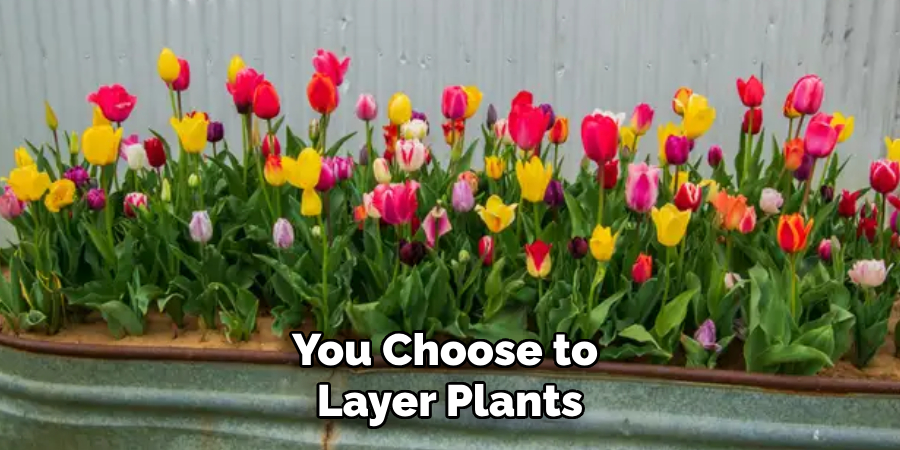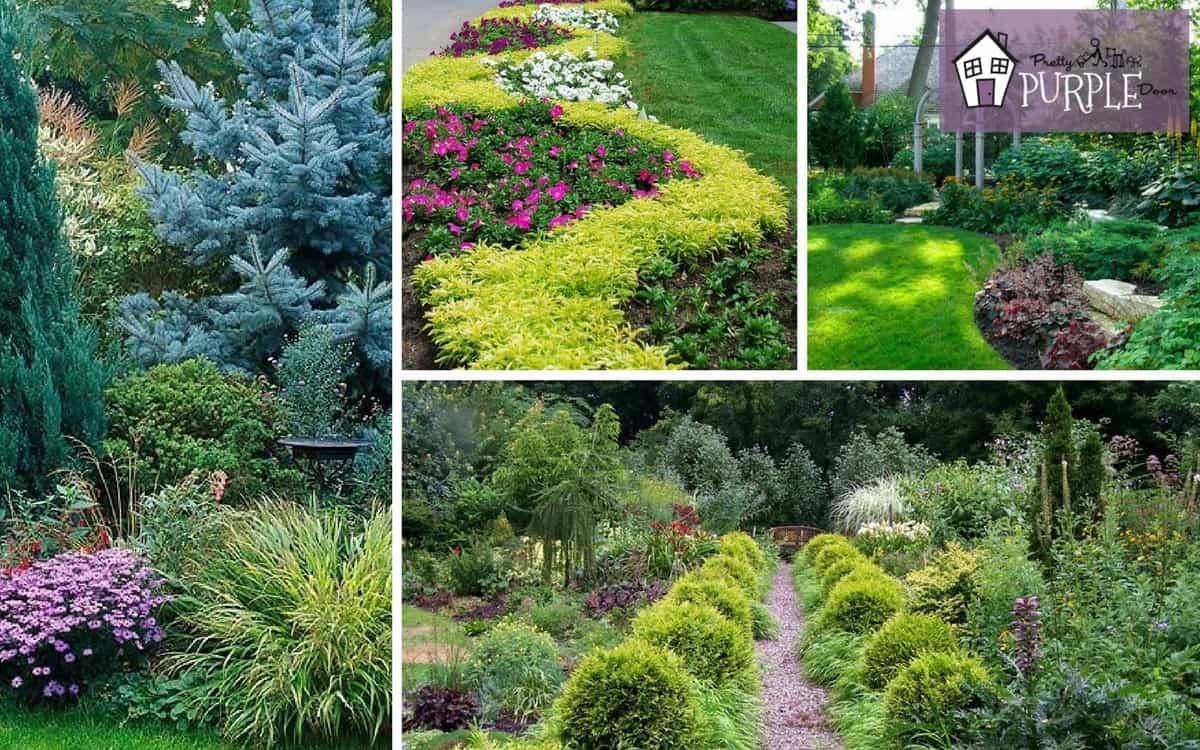To layer landscaping, start by choosing a focal point such as a tree or shrub, and then add layers of plants around it, using a variety of heights, textures, and colors for visual interest. Consider the growth habits and maintenance requirements of each plant to ensure they are compatible.
Layering can also be achieved by incorporating different materials such as rocks, mulch, or stepping stones to add depth and dimension to the landscape. By layering your landscaping, you can create a visually appealing and cohesive outdoor space that is both functional and beautiful.

Credit: blog.moonvalleynurseries.com
How to Layer Landscaping: Step by Step Guide
Creating Depth And Dimension
Creating depth and dimension in your landscape is crucial for enhancing visual appeal. By layering different elements such as plants, rocks, and hardscapes, you can achieve a multi-dimensional effect. Incorporating varying heights, textures, and colors adds interest to your outdoor space.
Not only does it create a visually stunning environment, but it also attracts wildlife by providing them with a habitat. Birds and insects will be drawn to the different layers, finding shelter and food in the diverse vegetation. Additionally, layering landscaping can help create privacy and define different areas within your yard.
Whether you choose to layer plants, add retaining walls, or create raised beds, this technique adds depth and dimension to your outdoor space, making it more aesthetically pleasing and functional. So go ahead, get creative, and transform your landscape into a captivating masterpiece.

Groundcover Plants
Layering landscaping involves strategically placing different types of plants to create a visually appealing outdoor space. Groundcover plants, such as creeping thyme or ajuga, offer low-growing foliage that spreads across the ground. When it comes to shrubs and bushes, choose a variety of sizes and textures to add depth and interest to your landscape.
Consider including flowering shrubs like hydrangeas or evergreens like boxwood. Additionally, incorporating trees and tall plants can provide shade, privacy, and vertical elements to your design. Opt for trees with different heights and leaf colors, such as dogwoods or japanese maples, while tall grasses like miscanthus or pampas grass can add visual interest.
By carefully layering different plants, you can create a harmonious and dynamic landscape that is visually captivating and complements your outdoor space.
Planning The Layout
Planning the layout of your landscaping is crucial for a visually appealing design. To start, prepare the soil properly by removing any debris and weeds. Next, choose the plants that will thrive in your climate and arrange them strategically based on their height and colors.
Remember to consider different layers such as ground cover, shrubs, and trees. Each layer should complement the others and create a harmonious look. As you plant, ensure that the spacing allows for growth and avoid overcrowding. Finally, regularly maintain and prune your landscaping to keep it looking its best.
By following these guidelines, you can create an impressive and well-layered landscape that will enhance the beauty of your outdoor space.
Watering And Irrigation
Watering and irrigation are crucial factors in successfully layering your landscaping. Properly hydrating your plants ensures their healthy growth and vitality. Mulching plays a vital role in retaining moisture and preventing weed growth, making it an essential step in the layering process.
Additionally, it helps regulate soil temperature and reduce soil erosion. Pruning and trimming are important techniques to maintain the shape and health of your plants. Regularly removing dead or overgrown branches promotes new growth and improves the overall appearance of your landscape.
Keep in mind that each plant requires different watering, mulching, and pruning needs, so research and adjust accordingly. By following these guidelines, you can achieve a well-layered and visually pleasing landscape that will thrive for years to come.
Mix And Match Plant Colors And Textures
Layering landscaping involves mixing and matching plant colors and textures, as well as incorporating hardscape features. By utilizing containers, you can add depth and dimension to your outdoor space. Experimenting with different types of plants, from perennials to shrubs, will create visual interest.
Additionally, consider contrasting foliage and flower colors to add variation. Incorporating hardscape features such as pathways, retaining walls, or water features will further enhance the overall aesthetic. By strategically placing these elements, you can create focal points and visually separate different areas within your landscape.
Avoid overcrowding plants and maintain proper spacing to allow each element to shine. Moreover, by layering your landscape, you can create a harmonious and appealing outdoor environment. So, let your creativity flow and use layers to transform your yard into a stunning outdoor oasis.
Dealing With Plant Overcrowding
Layering landscaping is an effective technique for creating depth and visual interest in your outdoor space. Dealing with plant overcrowding is essential to ensure proper growth and avoid competition for resources. Managing pests and diseases becomes imperative to maintain the health and vitality of your plants.
Regularly inspect and treat affected areas accordingly. Rejuvenating and renovating layers periodically helps revitalize the overall appearance of your landscape. Prune overgrown plants, remove dead or diseased foliage, and add fresh mulch to promote growth and rejuvenation. Remember to maintain a variety of phrases in your writing, keeping it engaging for readers.
With these tips, you can achieve a well-layered, thriving landscape that adds beauty to your surroundings.
Frequently Asked Questions For How To Layer Landscaping
Can I Layer Different Types Of Plants In My Landscaping?
Yes, you can layer different types of plants in your landscaping. Layering different plants adds depth and visual interest to your landscape. You can create layers by using tall trees or shrubs as a backdrop, medium-sized plants in the middle, and low-growing groundcovers or flowers in the front.
This creates a natural-looking and aesthetically pleasing landscape.
How Do I Choose The Right Plants For Layering?
When choosing plants for layering, consider their height, growth habits, and compatibility with each other. Select plants that have different heights to create layers. Also, consider the sunlight, soil type, and moisture requirements of the plants to ensure they will thrive in your specific location.
Choose plants with complementary colors and textures to enhance the overall visual appeal of your landscape.
What Are The Benefits Of Layering In Landscaping?
Layering in landscaping offers several benefits. It adds depth and visual interest to your outdoor space, creating a more dynamic and appealing landscape. Layered plants also provide shade, privacy, and wind protection. Additionally, layering allows you to maximize the use of your garden space by planting a greater variety of plants in the same area.
How Do I Maintain Layered Landscaping?
Maintaining layered landscaping involves regular pruning, fertilizing, and watering. Trim or prune plants as needed to maintain their desired height and shape. Apply organic or slow-release fertilizers to provide necessary nutrients to the plants. Water the plants according to their specific needs, taking into consideration their water requirements and the climate in your area.
Regularly remove any weeds or unwanted plants that may detract from the layered look.
Can I Layer Landscaping In Small Spaces?
Yes, you can layer landscaping even in small spaces. In a limited area, choose smaller plants that have a compact growth habit. Use containers or hanging baskets to add vertical layers. Incorporate trellises or vertical gardens to maximize the use of vertical space.
By carefully selecting plants and utilizing creative ideas, you can create a layered landscape that is beautiful and functional, even in small spaces.
Conclusion
Creating layered landscaping is a brilliant way to enhance the beauty and functionality of your outdoor space. By incorporating various plant species, textures, and heights, you can create a captivating and dynamic landscape design. The key is to carefully plan and consider factors such as sun exposure, soil types, and water requirements.
Remember to start with the foundation, incorporating shrubs and groundcovers, followed by mid-height plants, and finally, add in a mix of taller trees and perennials for added interest. Don’t forget to pay attention to the details, like incorporating hardscape elements and using color strategically.
With a well-thought-out layering approach, your landscape will flourish and become a haven of beauty for both you and nature. So go ahead and get creative, experiment with different plant combinations, and enjoy the process of transforming your outdoor space into a stunning layered landscape masterpiece.
Happy gardening!

